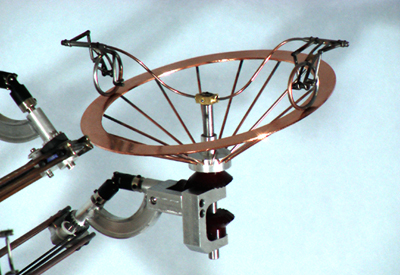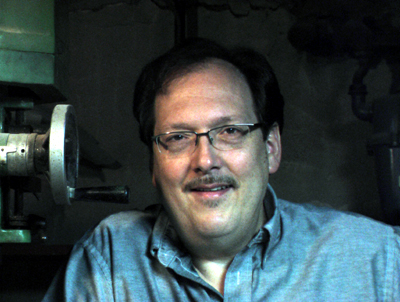
I have always been fascinated by machines, especially those with wheels, screws and linkages, such as those found in steam locomotives. When I look at these things, I’m inspired not only by the beauty of the geometric relationships of the moving parts, but also in the ways they’re assembled and juxtaposed, as predicated by their function within a system, and the evolution of mechanical design convention.
As these systems move, I am hypnotized
by the graceful motions of complex mechanisms, my eyes following the curves
drawn out by the paths of links; the growth and recession of serendipitous
shapes. I drink up every detail of line and shadow; the interplay of negative
and positive spaces; the reflections and refractions of objects in witness,
transcribed by the surface and lenticular properties of various materials,
their textures and finishes.
I have a sense of wonder for the mathematic precision that describes the
behavior of the material world. For me, it’s not enough to be told:
that on Earth, a body falls at 32.2 feet per second squared, and therefore,
a falling ball traverses 16.1 feet in the first second. I am compelled
to demonstrate that it’s really true, by creating mechanical systems
that crucially and continuously depend on the inherent, possibly immutable
properties of our universe.
It strikes me how easily mechanical systems can serve as both visual and literary metaphors for human social interaction and structure. A wheel may illustrate that: what goes around comes around; a lever: mediating a balance of good and evil; a piston-and-cylinder arrangement: as stand-in for an obstinate position that can only be influenced by applying pressure.
And, counter intuitively though it may
seem at first, these mechanical understudies can be just as unpredictable
as, and fascinating as their ideal embodiments, nature being such a fickle
thing. A fool who dares take on these challenges must be prepared to create
very precise and thoroughly thought out devices. For nature has a clever
way of thwarting the very best laid plans, taunting with the rewards of
high ideals, while admonishing mortal hubris, with error factors as subtle
as the evening breeze.
– Bradley N. Litwin
